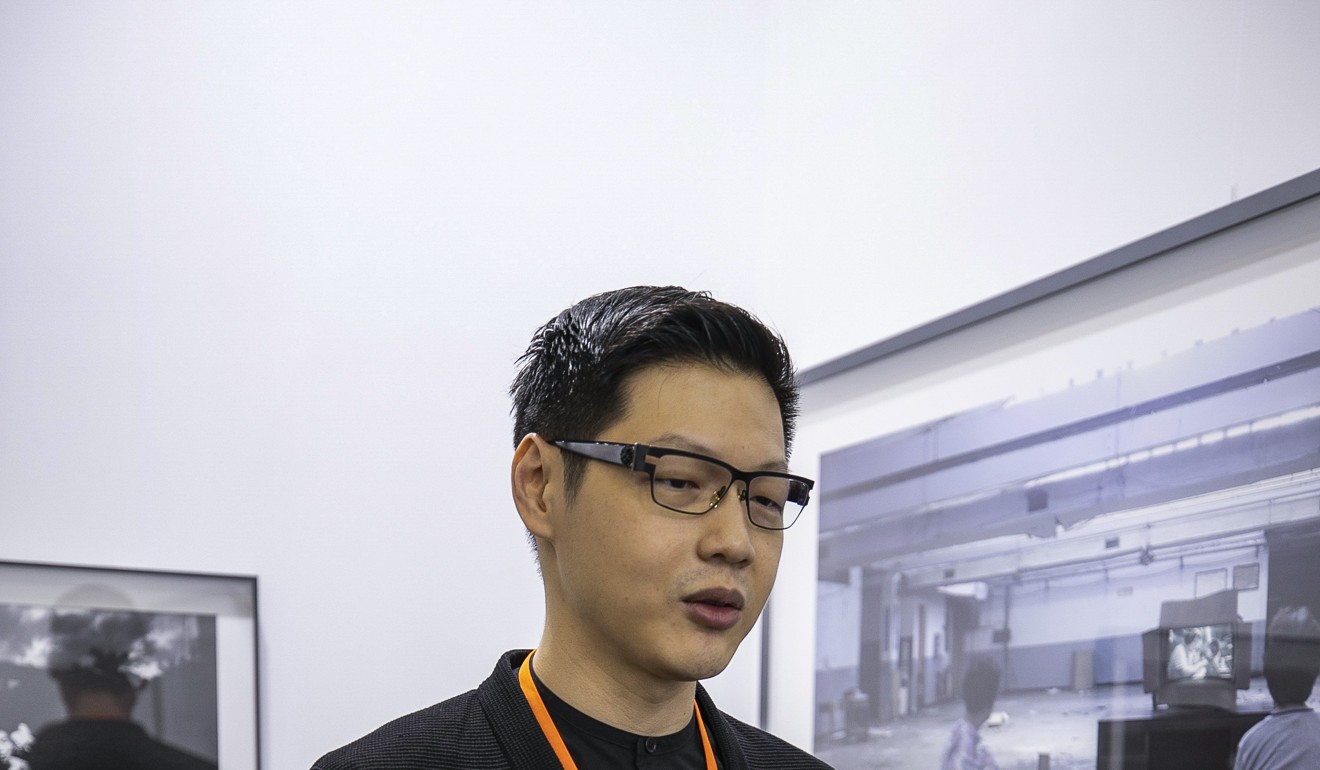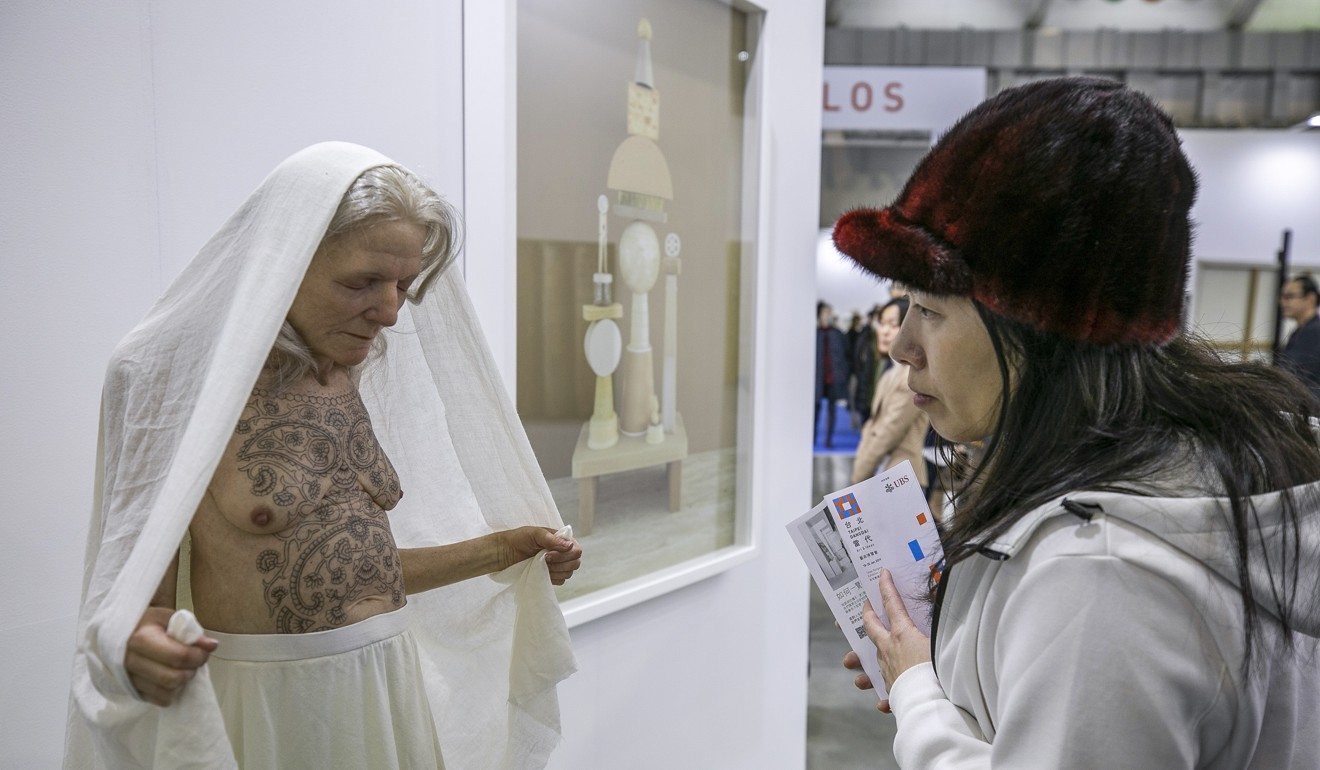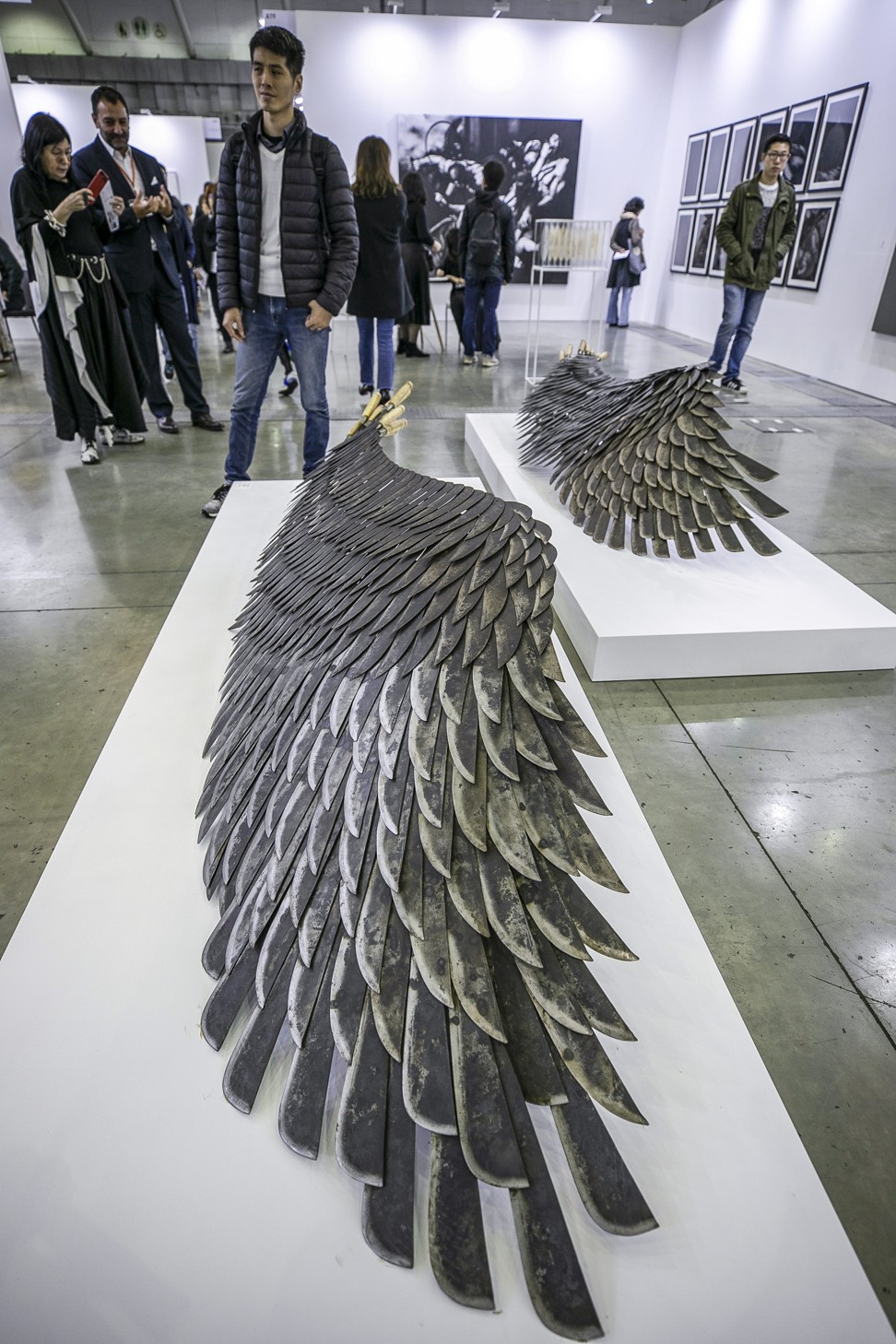
Galleries hope to draw out ‘invisible Taiwanese collectors’ by showing at new Taipei art fair
- Private museum owners Yoshiko Mori and Budi Tek, and Shanghai billionaires, among visitors to Taipei Dangdai, but exhibitors aim to reach local collectors
- Yayoi Kusama, James Turrell, Yoshitomo Nara and Wolfgang Tillmans among the artists whose works are for sale at the inaugural event in Taipei
A new contemporary art fair in Taipei aimed at unlocking the potential of Taiwan’s art market opened on Thursday, with galleries testing the appetite for works valued at more than US$1 million. However, many of the transactions at the fair may end up being executed in Hong Kong so buyers and sellers can avoid the island’s complex tariffs.
Aggressive marketing before the fair’s opening drew hundreds of wealthy East Asians to the launch of the four-day Taipei Dangdai at the Nangang Exhibition Centre on the eastern edge of the city, its organiser said. UBS, the Swiss bank that is the main sponsor of the fair, arranged for its high-net-worth clients in Taiwan to attend, while another bank flew Shanghai billionaires by private jet across the Taiwan Strait, fair director Magnus Renfrew said.
Singapore art community rallies round after fair’s cancellation
Major private museum owners Yoshiko Mori and Budi Tek also attended, as part of sizeable contingents from Japan and Indonesia, while familiar faces from Hong Kong, such as William Lim, were also spotted.
The event is billed as Taiwan’s answer to Art Basel Hong Kong but with a more local flavour. The 90 galleries present are a mix of international and local players; many Western galleries have brought over works by blue-chip artists that have rarely been seen at Taiwan’s art fairs before.
While many art fairs gauge their success by their international reach, most gallerists said they were at Taipei Dangdai not to sell to big international collectors but to convince a large body of “invisible Taiwanese collectors” to buy their art.
“We have to be here because otherwise it would be disrespectful to such a great collecting community. We are here to say to collectors, we are here for you to find us,” said Marc Glimcher, president of Pace Gallery, the multinational dealership headquartered in New York.
He has brought over a diverse mix of works, including Israeli artist Michal Rovner’s videos, a large bronze sculpture by Yoshitomo Nara, and light installations by James Turrell and Leo Villareal. The Nara head of a smiling girl, sold for US$500,000, was among several works that went mainly to local collectors on the fair’s first day.
“It is a bit slow, but in our experience most sales happen towards the end. Buyers here do not make snap decisions,” Glimcher said.

There is a lot of Japanese art on show because of the historic ties between the island and its former coloniser. The Taka Ishii Gallery from Tokyo is showing Nara’s less well-known photographic works, as well as a selection of works by three other Japanese artists, including Kimiyo Mishima’s stacks of newspapers and magazines made with ceramic. The gallery has included one Western artist, Sherman Ruby, because the American artist already has a sizeable collector base in Taiwan.
David Zwirner sold an Infinity painting by Yayoi Kusama for over US$1 million, and works by German artists such as Wolfgang Tillmans and Neo Rauch, to Taiwanese buyers.
The fair offers local galleries a chance to show more experimental works to a mature audience. “My former experience in Taiwan fairs was always bad because our works are quite avant garde. The audience who went to the other fairs were conservative and could not appreciate what we do. This time, our booth can afford to be more daring. We are here not just to get exposure to new collectors, but also to network with international galleries so that we can collaborate in the future,” said Lin Pei-yu, founder of Taipei’s Project Fulfill Art Space.


She is showing a conceptual installation by Chen Sung-chih called “Inverted Syntax” (2017), and paintings by Hsieh Mu-chi that mix historic references with signs of the digital age, among other young local artists.
David Lin, the second-generation owner of Taipei’s Lin & Lin Gallery, said some of Taiwan’s top collectors have very low profiles. “Galleries are here to meet the ones who don’t travel much and to convince them to be open to buying from galleries instead of just buying at auctions,” he said.
Renfrew agreed, saying he met a whole new group of Taiwanese collectors when he was working at Bonhams, the auction house, who bought exclusively at auctions because they could gauge the popularity of what they bid for, much as Hong Kong collectors did up until a decade ago.

He said he was aware of galleries using Hong Kong, which is tax free, as their point of sale, something he said the fair organiser played no role in. But he said this did not diminish the value of the fair, which is being held to encourage Taiwanese collectors to buy more top-quality contemporary art.
Taiwan has a population of just under 24 million. Along with Japanese and South Korean collectors, the Taiwanese were among the first Asians to collect contemporary art in the 1980s.
Three satellite fairs are being held to coincide with Taipei Dangdai – Ink Now Taipei Art Expo, the One Art Taipei hotel art fair, and Art Future (formerly known as Art Formosa).


